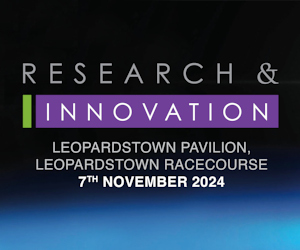Huawei to spend US$6m on research and development in Ireland this year

Chinese smartphone and telecoms equipment giant Huawei said its total R&D investment in Ireland will expand in the coming years and this year it will be US$6m.
Huawei has three offices in Ireland and employs 75 people. Last year, the company established new R&D operations in Ireland spread across two sites, employing 40 highly skilled research professionals.
The R&D centre focuses on the company’s next-generation customer experience management product, SmartCare.
Future expansions at the two sites will expand R&D functions into various IT software projects.
In Athlone, Co Westmeath, Huawei co-operated with Npsar on OSS technical research and framework design.
The company also collaborates with University College Dublin (UCD) on cloud computing and commerce R&D.
In 2010, Huawei launched the Huawei Ireland Graduate Recruitment Programme aimed at recruiting highly skilled engineering graduates.
Founded in 1987 by Ren Zhengei, Huawei has a turnover of US$39.5bn and employs 150,000 people worldwide.
Operating in the Irish market since 2004, the company provides broadband and mobile network systems to leading telecoms providers, including O2, BT, Eircom, Vodafone and Imagine. The company has a 90pc share of the mobile broadband market in Ireland.
Globally, Huawei spends 10pc of its annual revenues on R&D, amounting to US$5.1bn in 2013.
In Ireland, the company’s technology serves 2m people and the company’s procurement in Ireland stood at €5.5m last year.
Next month, Huawei’s flagship smartphone the Ascend P7 will launch in the Irish market through Carphone Warehouse.
The next industrial revolution
Huawei’s CEO Guo Ping was in Dublin this morning to address the Huawei Ireland Broadband Forum.
“Today, the development and widespread application of ICT technologies, such as mobile internet, big data and cloud computing, are driving us towards a new industrial revolution; specifically, the revolution of intelligentisation.
“In a connected world, all industries will become digital.”
Ping said the digital infrastructure on which the global community relies accounts for more than 35pc of the digital economy.
“The physical economy and the virtual economy, which previously developed in parallel, have now intersected.
“A self-driving car is a tool for transportation; it is also a smart device that’s connected to the internet. Broadband networks are becoming a core competence of national economies.”
When it comes to broadband and the roll out of the infrastructure in Ireland, Ping said public-private partnerships are the most effective means of delivering broadband.
He said 70pc of budgets for rolling out broadband are taken up by site resources, pipelines and cables.
“Governments need to formulate reasonable policies, standards and specifications because they are critical to cross-sector collaboration.
“For example, governments can establish construction specifications that require the deployment of fibre to the home (FTTH) and the open accessibility of lamp poles in urban lighting systems and pipelines for urban drainage systems. Through these specifications, basic resources can be shared across industries and the cost of broadband network construction can be significantly reduced. It is likely that Ireland will become a role model in this regard.”
Ping said the synergy between optical fibres and copper cables, a process known as vectoring, is the most feasible and economical model that exists.
“The deployment of optical fibres is a huge project that cannot be completed within a short period of time. Copper cables already deployed over the past decades are a valuable resource and must be fully leveraged. We must bring new life into the existing copper cable infrastructure.
“With that said, optical fibres and copper cables will certainly coexist over the long term. The key to success is to further improve bandwidth capacity over copper cables,” Ping said.









There are no comments at the moment, do you want to add one?
Write a comment